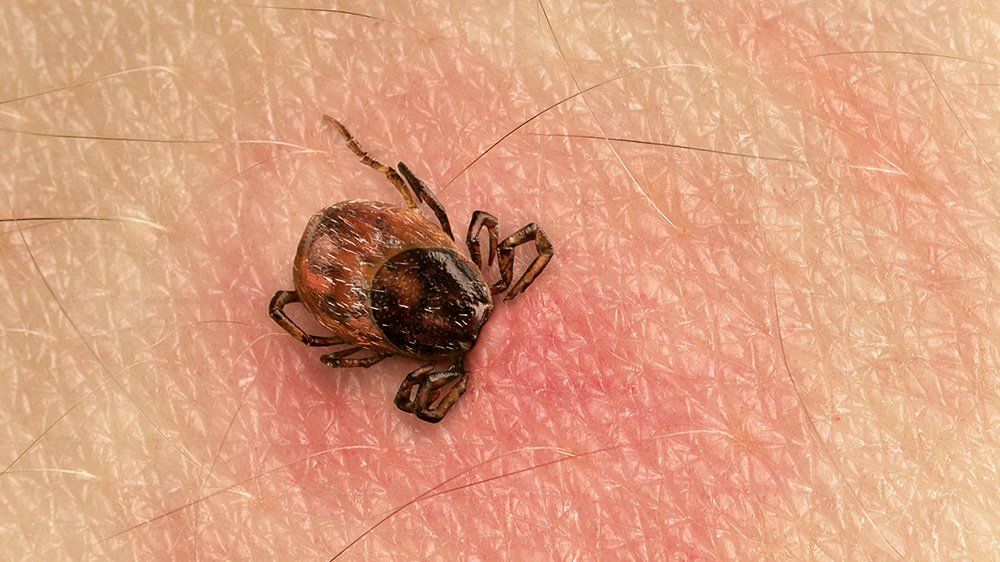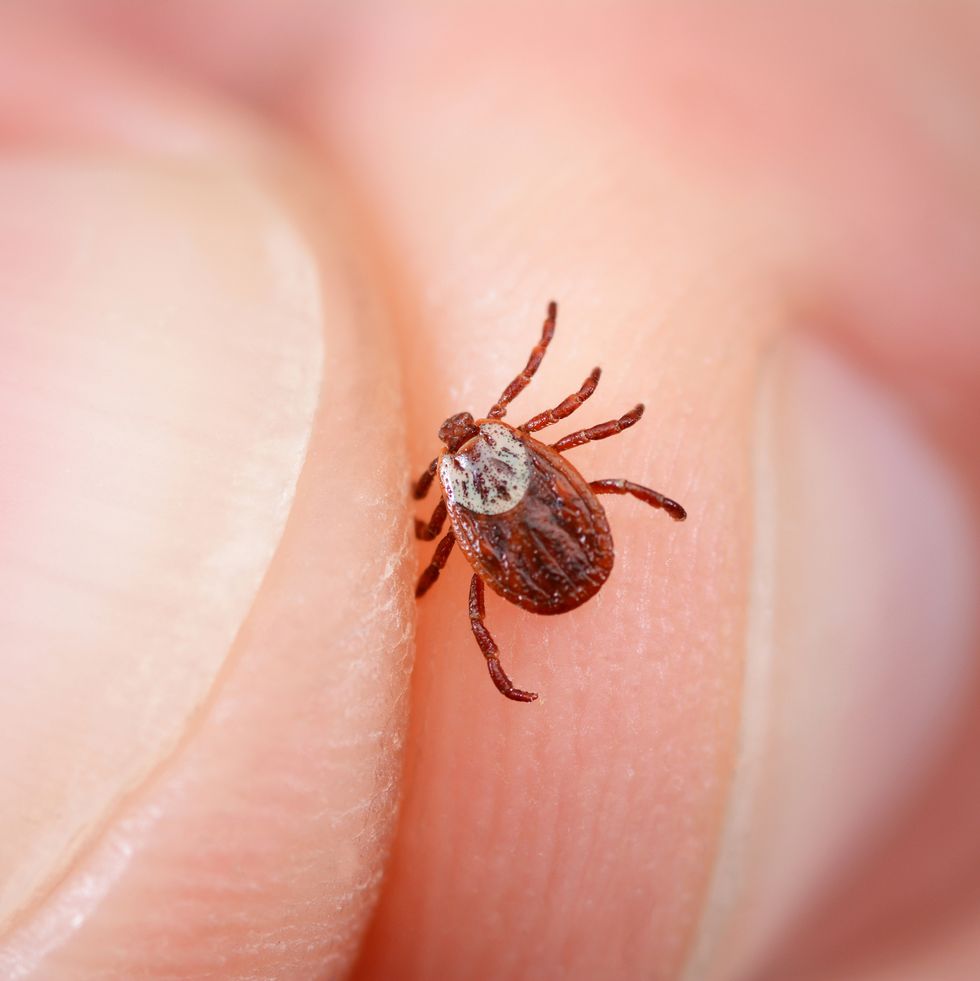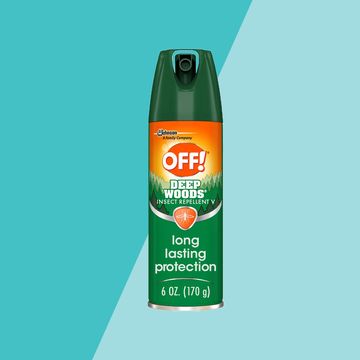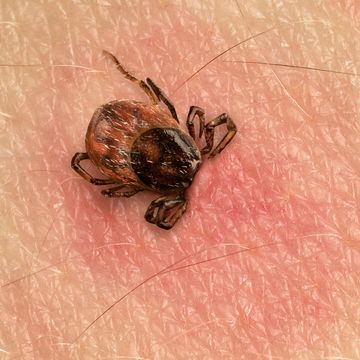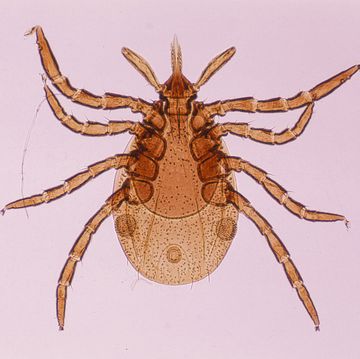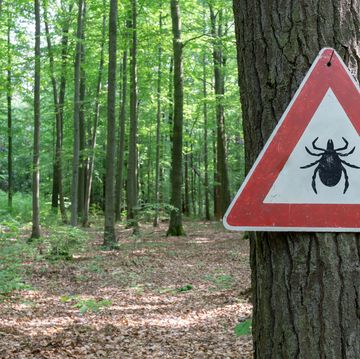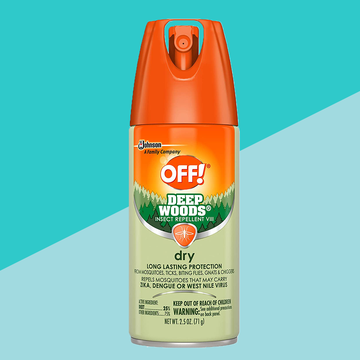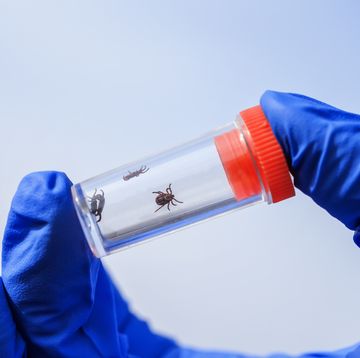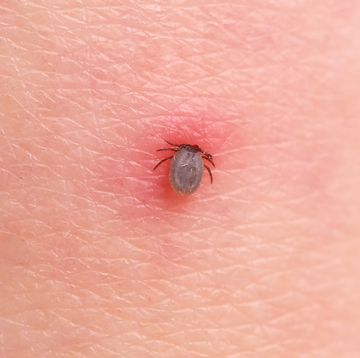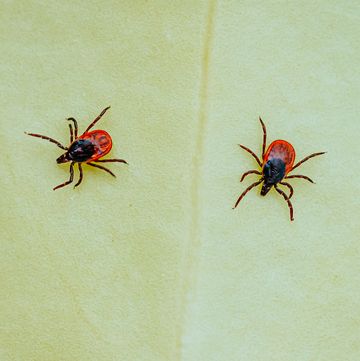Tick-borne diseases weren't always newsmakers. Just three decades ago, they were only a big issue for people who lived in New England. But now, the blood-sucking bugs are infecting people across the country at rapidly increasing rates. In fact, cases of tick-related illnesses—such as Lyme disease and Rocky Mountain spotted fever—have more than doubled in the past 13 years, according to a 2018 report from the Centers of Disease Control and Prevention (CDC).
“Once a tick crawls on you, it is looking for a safe, warm place to attach,” explains Jody Gangloff-Kaufmann, an entomologist at Cornell University’s College of Agriculture and Life Sciences. “Some will attach immediately. Once that happens, the transfer of disease organisms can begin. While some diseases take a few hours to a day to transfer, Powassan virus, which is somewhat rare but deadly, can be transmitted within minutes.”
Still, Lyme disease—which is caused by the bacteria Borrelia burgdorferi that spreads to humans through a bite from an infected blacklegged tick—accounted for 82 percent of reported tick-borne diseases between 2004 and 2016, per the CDC. Lyme disease's flu-like symptoms, which range from muscle pain to unrelenting fatigue to headaches, can be debilitating.
That’s why having ticks on your radar is so important, especially when you're hiking, camping, or doing other outdoor activities. “The best way to avoid disease is to do a daily tick check and remove ticks as soon as possible,” says Gangloff-Kaufmann.
Here’s exactly how to remove a tick that has latched onto you—and how to prevent a future bite.
First: What does a tick look like?
The photo at the top of this story is an extreme close-up of a tick. In real life, though, they are tiny—the size of a poppyseed. Earlier this summer, the CDC posted a photo of ticks hiding on a poppyseed muffin to demonstrate just how little the bugs are. The post sparked collective horror online—apparently it made poppyseed muffins forever unappetizing for some—but it really is a perfect visual representation of their size.
Ticks can hide anywhere on your body, so after you’ve spent time in a wooded, grassy area, it’s important to check everywhere, including in between your toes, under your armpits, behind your knees, around your groin area, under your breasts, and behind your ears.
Unfortunately, tick bites are hard to identify since they often look like other bug bites and the symptoms vary from person to person. But ideally, you want to spot it while the tick is still attached to you. In this case, the head will likely be inside of your skin, and its body will engorge the longer it stays attached. (Check out these tick bite pictures for visual examples.)
How to remove a tick the right way
If you do find a tick on your body, put down the petroleum jelly, essential oils, matches, nail polish, and other nonsense fixes you might have heard about. The only safe way to get a tick out intact is to use a pair of fine-tipped tweezers, per these directions from the CDC:
- With the tweezers, grasp the tick as close to the surface of your skin as possible.
- Using steady, even pressure, pull the tick upward in one swift motion without jerking or twisting it.
- If parts of the tick are left inside your skin, try to remove them with the tweezers. If you’re not able to, simply allow your skin to heal.
What if part of the tick gets left behind?
If it looks like part of the head or mouth has been left in your skin, don’t freak out. “Sometimes the tick’s mouthparts can be left behind in the skin after a clumsy tick removal,” says Gangloff-Kaufmann. “Treat this like a splinter, it can be forced or dug out or left to work its way out. There is no real risk from tick mouthparts, themselves.”
What to do after removing a tick
It’s not uncommon to see a bit of irritation after removing a tick. “You may see redness, tenderness, or swelling, depending on your level of allergic reaction to the bite,” says Gangloff-Kaufmann. “It is usually not severe, but wipe the area of the tick bite with alcohol to prevent any chance of secondary infection.”
Then, you should save the tick. Yes, it’s gross, but it’s a good idea to keep it around for a few weeks in case you develop symptoms of Lyme disease or another tick-borne infection. “Your doctor can send it to a laboratory to be analyzed to see what type of tick it is and what diseases it carried,” explains Christina Nelson, MD, MPH, an epidemiologist and pediatrician at the CDC.
For the time being, just place the tick in a sealed plastic bag or field container (yes, it will die) and stash it someplace like your garage for a few weeks until it’s clear that you haven’t developed out-of-the-ordinary symptoms.
Hit the pause button before getting tested
If you suffer a tick bite, you may be tempted to race into your doctor’s office and demand a screening—but that probably isn’t a good idea. Up to 1 in 4 blood tests used to diagnose Lyme disease lead to a false positive result, according to the American College of Rheumatology.
Instead, keep your eye on it, and head to your doctor if you notice a rash forming around the area of the bite. About 80 percent of infected people develop a rash within three to 30 days of being bitten, the CDC says. The rash, known as erythema migrans, usually enlarges and can get clearer as it gets bigger, resulting in a classic bullseye appearance. But not all rashes associated with tick bites look like this, so any red rash that’s spreading should be checked out, says Dr. Nelson.
How to prevent tick bites
Follow these tips to keep ticks away from your body and home:
Load up on repellent
Before you wander outdoors, apply a tick repellent that contains around 20 percent DEET, IR3535, picaridin, or oil of lemon eucalyptus. “Ticks have a sensory organ on their forelegs that detects odors, CO2, and heat. Repellents are thought to interfere with that sensory organ,” says Gangloff-Kaufmann.
Protect your clothing and gear
Treating your hats, jackets, tents, backpacks, and shoes with products containing 0.5 percent permethrin, a type of insecticide, is an effective way to keep ticks at bay. “The use of permethrin-based sprays is intended to knock ticks down and kill them, not solely as a repellent,” says Gangloff-Kaufmann. We recommend this top-rated option from Sawyer, but just keep in mind that it should never be applied to your skin.
Do a full-body check
Once you get home from a known tick habitat—say, a forest or grassy area—check every part of your body to ensure you haven’t brought them inside, including under your arms, around your ears, inside your belly button, behind your knees, between your legs, and in your hair. You can always do this in the shower, too, which will help wash away any stragglers.
Keep your lawn tidy
Mowing your lawn frequently, cutting back brush, raking leaves, and keeping your lawn landscaped can help prevent ticks from setting up shop near your home. Using tick control tubes can also be helpful.
Check your pets
Your pets should get a full-body check after rolling around in the grass, too. If you happen to spot a bite, here’s the right way to remove a tick from your dog.
Stay updated on the latest science-backed health, fitness, and nutrition news by signing up for the Prevention.com newsletter here. For added fun, follow us on Instagram.
Alisa Hrustic is the deputy editor at Prevention, where she leads the brand’s digital editorial strategy. She’s spent the last five years interviewing top medical experts, interpreting peer-reviewed studies, and reporting on health, nutrition, weight loss, and fitness trends for national brands like Women’s Health and Men’s Health. She spends most of her days diving into the latest wellness trends, writing and editing stories about health conditions, testing skincare products, and trying to understand the next greatest internet obsession.

Hallie Levine is a freelance writer who has written about health and fitness for more than 20 national publications, including Glamour, Newsweek, and the New York Post. She lives in in Fairfield, CT with her three kids and dog.
